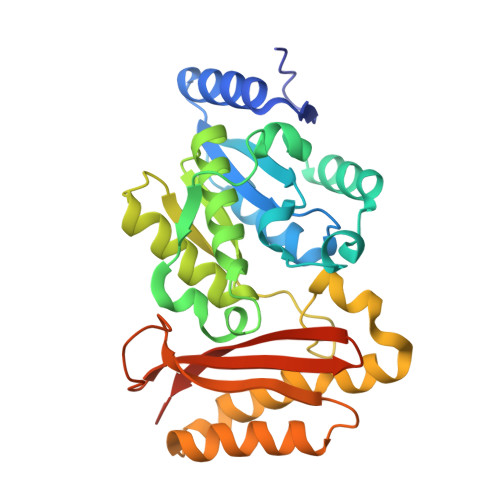A Fragment-Based Approach to Probing Adenosine Recognition Sites by Using Dynamic Combinatorial Chemistry
Scott, D.E., Dawes, G.J., Ando, M., Abell, C., Ciulli, A.(2009) Chembiochem 10: 2772-2779
- PubMed: 19827080
- DOI: https://doi.org/10.1002/cbic.200900537
- Primary Citation of Related Structures:
3IOB, 3IOC, 3IOD, 3IOE - PubMed Abstract:
A new strategy that combines the concepts of fragment-based drug design and dynamic combinatorial chemistry (DCC) for targeting adenosine recognition sites on enzymes is reported. We demonstrate the use of 5'-deoxy-5'-thioadenosine as a noncovalent anchor fragment in dynamic combinatorial libraries templated by Mycobacterium tuberculosis pantothenate synthetase. A benzyl disulfide derivative was identified upon library analysis by HPLC. Structural and binding studies of protein-ligand complexes by X-ray crystallography and isothermal titration calorimetry informed the subsequent optimisation of the DCC hit into a disulfide containing the novel meta-nitrobenzyl fragment that targets the pantoate binding site of pantothenate synthetase. Given the prevalence of adenosine-recognition motifs in enzymes, our results provide a proof-of-concept for using this strategy to probe adjacent pockets for a range of adenosine binding enzymes, including other related adenylate-forming ligases, kinases, and ATPases, as well as NAD(P)(H), CoA and FAD(H2) binding proteins.
- University Chemical Laboratory, University of Cambridge, Lensfield Road, Cambridge, CB2 1EW, UK.
Organizational Affiliation:




















